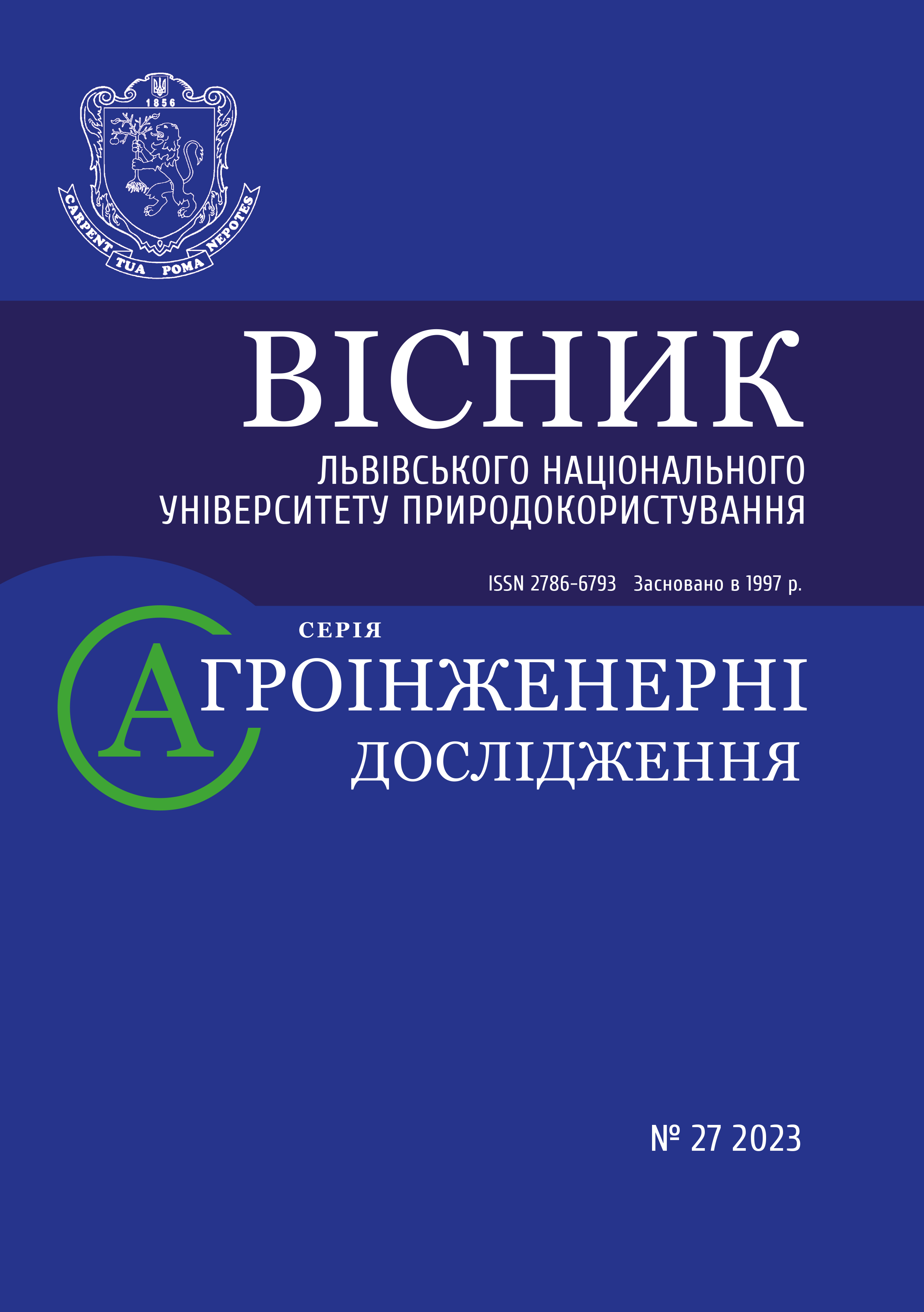On tension in composites under heating
DOI:
https://doi.org/10.31734/agroengineering2023.27.084Keywords:
potential functions, transversally isotropic medium, imperfect contact, spheroid, field of pressureAbstract
Spatial problems of the theory of elasticity often arise when solving various technical and technological problems of modern production, in particular when building composite materials and structural elements.
The behavior of structural materials can be studied at three structural levels: macro-, micro-, and atomic level. In construction mechanics, the concept of continuous medium is essential only at the micro level. Consideration of the effect of material heterogeneity at this level in the analysis of macrostresses significantly depends on the size of the structure itself.
Development and introduction of new structural materials require evaluating their strength properties under various types of load.
When creating composite materials, the inclusions that appear in the matrix significantly affect the stress-strain state of the composite as a whole under various mechanical or thermal loads.
The achievement of extreme values by stress components at the interface of phases is due to the production technology in some cases, and, heterogeneity in others. It is introduced to improve the strength of the material.
The study of spatial problems of the static theory of elasticity and thermoelasticity for homogeneous isotropic and anisotropic bodies in the general formulation is associated with great mathematical difficulties caused by the complexity of constructing a solution of a system of partial differential equations that satisfies the boundary conditions.
One of the effective methods of solving problems of elasticity theory is the Fourier method, which is based on the representation of general solutions of equilibrium equations through potential functions. A feature of the Fourier method is the use of different representations of the solution of the Lamé equations through harmonic functions, which allows searching for a solution in the form of a series.
In this direction, important results were presented in the works of Yu. M. Koliano, Ya. S. Pidstryhach, Yu. M. Podilchuk and many others, in which exact solutions of spatial problems of the theory of elasticity and static thermoelasticity in spherical, cylindrical, spheroidal, parabolic and other coordinate systems are constructed.
The paper considers the problem of distribution of thermal stresses in an unbounded transversely isotropic medium, which contains anisotropic inclusions in the form of a compressed spheroid with uniform heating, relative to mechanical and thermal properties.
When solving spatial problems of the theory of elasticity with spheroidal inclusions, it is convenient to use coordinate systems for a compressed spheroid.
The conducted studies show that with uniform heating of the medium, the stresses on the inclusion surface are local both along the X axis and along the Z axis.
References
Attetkov, А. V., & Belyakov, N. S. (2006). The temperature field of an infinite solid containing a cylindrical channel with a thermally thin surface coating. High Temperature, 44 (1), 139–143.
Bubniak, T. I. (2018). Concentration of normal stresses in inclusion under the effect of a linear temperature field. Bulletin of Lviv National Agrarian University. Architecture and Agricultural Construction, 19, 46-48.
Bubniak, T. I. (2020). Stress distribution on the cavity surface in a transversely isotropic medium. Bulletin of Lviv National Agrarian University. Architecture and agricultural construction, 21, 5-9.
Ionescu-Cazimir, V. (1963). Theoreme de reciprocitate pentru problema dinamica a termo-elasticitii. An. Univ. Bucuresti. Ser. stiint. natur, 12(39), 93–100.
Maksymuk, O., & Shcherbyna, Ya. (2002). Impact of protective cover on the thermal mode of limited volumes. Bulletin of Lviv University. Series: Applied mathematics and informatics, 4, 126–130.
Pidstryhach, Ya. S., & Koliano, Yu. M. (1972). Unadjusted temperature fields and tension in thin plates. Kyiv: Nauk. dumka.
Pidstryhach, Ya. S., & Yarema, S. Ya. (1961). Temperature stresses in enclosures. Kyiv: Published by AN URSR.
Podylchuk, Yu. N. (1984). Boundary problems of elastic body statics. Spatial problems of the theory of elasticity and plasticity: in 5 vol. V. 1. Kyiv: Nauk. dumka.
Semerak, V. M., Ivanyk, Ye. H., & Sikora, O. V. (2010). Application of the approximation method in the modeling and analysis of non-stationary thermal processes due to the action of moving zones of local heating based on three-dimensional equations. Bulletin of the Lviv National Agrarian University. Architecture and Agricultural Construction, 11, 14-27.
Semerak, V. M., & Kosarchyn, V. I. (2014). Heat-stressed state in the vicinity of local plot of friction contact. Bulletin of Lviv National Agrarian University. Agroengineering studies, 18, 271–275.
Shevchuk, V. A. (2011). A non-stationary one-dimensional problem of heat conductivity for a cylinder with a thin multi-layer covering. Mathematical methods and physical-mechanical fields, 2, 179–185.
Sokolovskyi, Ya. I. (1995). Tense state of transversalo-isotropic environment with a spheroid inclusion under imperfect mechanical contact. Theoretical and Applied Mechanics, 25, 17-26.
Sokolovskyi, Ya. I. (1996). Spatial problem of transversal isotropic medium with a spheroidal inclusion under imperfect mechanical contact. Extra. NAS of Ukraine, 9, 45-50.
Zorski, H. (1958). On certain property of thermoelastic media. Bull. Acad. pol. sci. Ser. sci. tech, 6(6), 331–339.


